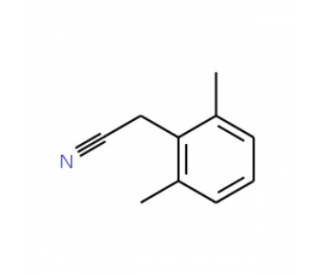详细说明
Species Reactivity
Human
Specificity
Detects human Endoglin/CD105.
Source
Monoclonal Mouse IgG 1 Clone # 166707
Purification
Protein A or G purified from hybridoma culture supernatant
Immunogen
Mouse myeloma cell line NS0-derived recombinant human Endoglin/CD105
Glu26-Gly586
Accession # Q5T9B9Formulation
Lyophilized from a 0.2 μm filtered solution in PBS with BSA as a carrier protein.
Label
Biotin
Applications
Recommended
ConcentrationSample
Flow Cytometry
2.5 µg/10 6 cells
U937 human histiocytic lymphoma cell line
Please Note: Optimal dilutions should be determined by each laboratory for each application. are available in the Technical Information section on our website.
Preparation and Storage
Reconstitution
Reconstitute at 0.5 mg/mL in sterile PBS.
Shipping
The product is shipped at ambient temperature. Upon receipt, store it immediately at the temperature recommended below.
Stability & Storage
Use a manual defrost freezer and avoid repeated freeze-thaw cycles.
12 months from date of receipt, -20 to -70 °C as supplied.
1 month, 2 to 8 °C under sterile conditions after reconstitution.
6 months, -20 to -70 °C under sterile conditions after reconstitution.
Background: Endoglin/CD105
Endoglin (CD105) is a 90 kDa type I transmembrane glycoprotein of the zona pellucida (ZP) family of proteins (1‑3). Endoglin and betaglycan/T beta RIII are type III receptors for TGF beta superfamily ligands, sharing 71% aa identity in the transmembrane (TM) and cytoplasmic domains. Endoglin is highly expressed on proliferating vascular endothelial cells, chondrocytes, and syncytiotrophoblasts of term placenta, with lower amounts on hematopoietic, mesenchymal and neural crest stem cells, activated monocytes, and lymphoid and myeloid leukemic cells (2‑5). Human Endoglin cDNA encodes 658 amino acids (aa) including a 25 aa signal sequence, a 561 aa extracellular domain (ECD) with an orphan domain and a two-part ZP domain, a TM domain and a 47 aa cytoplasmic domain (1‑3). An isoform with a 14 aa cytoplasmic domain (S-endoglin) can oppose effects of long (L) Endoglin (6, 7). The human Endoglin ECD shares 65-72% aa identity with mouse, rat, bovine, porcine and canine Endoglin. Endoglin homodimers interact with TGF-beta 1 and TGF-beta 3 (but not TGF-beta 2), but only after binding T beta RII (8). Similarly, they interact with activin-A and BMP-7 via activin type IIA or B receptors, and with BMP-2 via BMPR-1A/ALK-3 or BMPR-1B/ALK-6 (9). BMP-9, however, is reported to bind Endoglin directly (10). Endoglin modifies ligand-induced signaling in multiple ways. For example, expression of Endoglin can inhibit TGF-beta 1 signals but enhance BMP7 signals in the same myoblast cell line (11). In endothelial cells, Endoglin inhibits T beta RI/ALK5, but enhances ALK1-mediated activation (12). Deletion of mouse Endoglin causes lethal vascular and cardiovascular defects, and human Endoglin haploinsufficiency can a cause the vascular disorder, hereditary hemorrhagic telangiectasia type I (13, 14). These abnormalities confirm the essential function of Endoglin in differentiation of smooth muscle, angiogenesis, and neovascularization (2‑4, 12‑14). In preeclampsia of pregnancy, high levels of proteolytically generated soluble Endoglin and VEGF R1 (sFLT1), along with low placental growth factor (PlGF), are pathogenic due to antiangiogenic activity (15).
References:
Gougos, A. and Letarte, M. (1990) J. Biol. Chem. 265:8361.
ten Dijke, P. et al. (2008) Angiogenesis 11:79.
Bernabeu, C. et al. (2007) J. Cell. Biochem. 102:1375.
Mancini, M.L. et al. (2007) Dev. Biol. 308:520.
Moody, J.L. et al. (2007) Stem Cells 25:2809.
Velasco, S. et al. (2008) J. Cell Sci. 121:913.
Perez-Gomez, E. et al. (2005) Oncogene 24:4450.
Cheifetz, S, et al. (1992) J. Biol. Chem. 267:19027.
Barbara, N.P. et al. (1999) J. Biol. Chem. 274:584.
Scharpfenecker, M. et al. (2007) J. Cell Sci. 120:964.
Scherner, O. et al. (2007) J. Biol. Chem. 282:13934.
Pece-Barbara, N. et al. (2005) J. Biol. Chem. 280:27800.
Arthur, H.M. et al. (2000) Dev. Biol. 217:42.
Lebrin, F. and C.L. Mummery (2008) Trends Cardiovasc. Med. 18:25.
Venkatesha, S. et al. (2006) Nat. Med. 12:642.
Entrez Gene IDs:
2022 (Human); 13805 (Mouse); 497010 (Rat)
Alternate Names:
CD105 antigen; CD105; Endoglin; ENDOsler-Rendu-Weber syndrome 1; ENG; HHT1FLJ41744; ORW; ORW1











 粤公网安备44196802000105号
粤公网安备44196802000105号